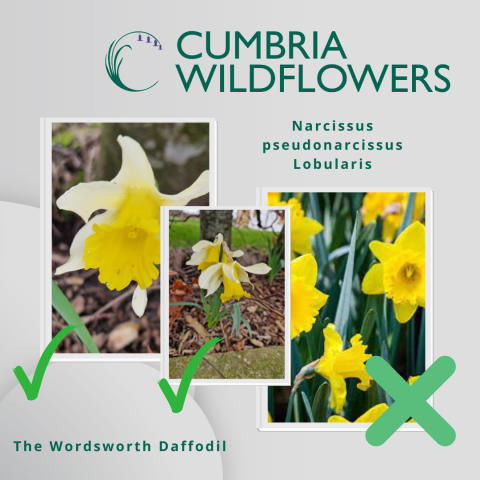The Story of True Cumbrian Wordsworth Daffodils
In the verdant tapestry of English literature, few images are as enduring and evocative as William Wordsworth's "Daffodils." With its timeless depiction of nature's beauty, Wordsworth's poem captures the essence of the English countryside and the profound connection between humanity and the natural world. Yet, amidst the poetic resonance of Wordsworth's verses, one might wonder: What sets the daffodils of his verse apart from their counterparts found scattered across the landscapes of the United Kingdom?
To unravel this query, one must first delve into the essence of Wordsworth's portrayal. In his iconic poem, Wordsworth describes a "host of golden daffodils" dancing beside a tranquil lake, their fluttering petals and graceful movements painting a scene of unparalleled splendour. These daffodils, in the poet's imagination, embody not merely a fleeting moment of aesthetic pleasure but a profound communion with nature's essence, stirring the soul with their timeless beauty.
However, when one encounters daffodils in the wilds of the UK, a subtle divergence emerges. Wordsworth's daffodils, immortalised in verse, may seem to possess an otherworldly radiance, yet the daffodils found dotting the countryside share in their allure a more grounded, earthly charm. They may lack the uniformity and synchronicity of Wordsworth's vision, standing solitary or in small clusters rather than in the vast "crowd" that graced the poet's memory. Their golden hues may vary, their stems swaying with the whims of the breeze, their petals brushed by the passage of time.
Moreover, the daffodils of reality, while no less captivating, often inhabit diverse habitats across the UK. From windswept coastal cliffs to verdant meadows, from rugged moorlands to sheltered woodland groves, these resilient flowers adapt and thrive in an array of environments, each imparting its unique character upon the blooms. Unlike Wordsworth's picturesque lakeside setting, where the daffodils sway in unison, these wild flowers forge their own narratives against the backdrop of Britain's varied landscapes.
Yet, amidst these differences, a fundamental unity prevails. Whether immortalised in verse or found swaying in the breeze, daffodils embody a timeless symbol of renewal, resilience, and the enduring beauty of nature. They serve as a reminder of humanity's intrinsic connection to the natural world, inviting us to pause, reflect, and find solace in the simple yet profound pleasures of existence.
In the end, the daffodils of Wordsworth's verse and those encountered in the fields and forests of the UK share a common thread—an indomitable spirit that transcends time and place, inspiring wonder, awe, and reverence in all who behold them.
The visual distinctions between Wordsworth's daffodils as depicted in his poetry and the various daffodil species found throughout the UK lie in both their presentation and their natural habitats. Wordsworth's portrayal of daffodils in his poem "I Wandered Lonely as a Cloud" captures a moment of breathtaking beauty and serenity. Here are some visual differences:
Quantity and Density: In Wordsworth's poem, the daffodils are described as a "host" or a "crowd" stretching "in never-ending line" along the shore of the lake and beneath the trees. This suggests a vast expanse of daffodils, densely packed and almost overwhelming in their abundance. However, in reality, daffodils in the UK can vary in population density, ranging from solitary blooms to scattered clusters depending on the location and environmental conditions.
Arrangement and Symmetry: Wordsworth's daffodils are depicted as dancing and fluttering in the breeze, creating a scene of harmonious motion and symmetry. Their golden heads nodding and tossing in unison evoke a sense of synchronised beauty. In contrast, while wild daffodils found throughout the UK can form charming clusters, they may not exhibit the same level of uniformity or synchronicity. Each flower may sway independently, reflecting the natural randomness of growth and movement.
Colour and Variety: Wordsworth's daffodils are described as "golden" in colour, evoking a vivid and radiant hue that dominates the landscape. While many daffodil varieties found in the UK share this characteristic golden hue, there are also variations in colour, including shades of yellow, white, and even orange. Furthermore, cultivated daffodil varieties often exhibit a wider range of colours and patterns compared to their wild counterparts.
Habitat and Setting: Wordsworth's daffodils adorn the picturesque landscape of the Lake District, thriving in the idyllic setting of a tranquil lake and undulating hills. This setting contributes to the sublime beauty and tranquillity evoked by the poem. In contrast, daffodils found throughout the UK inhabit diverse habitats, including meadows, woodlands, coastal cliffs, and gardens. Each habitat imparts its unique character to the daffodils, influencing factors such as size, growth pattern, and overall appearance.
While Wordsworth's portrayal of daffodils captures a moment of timeless beauty and transcendence, the visual differences between his poetic imagery and the daffodils found throughout the UK highlight the rich diversity and adaptability of this iconic flower in its natural environment.
When you subscribe to the blog, we will send you an e-mail when there are new updates on the site so you wouldn't miss them.



Comments